Egon Schiele’s Works in Prison as a Sample Case.
Abstract
We propose that Schiele’s oeuvre is on the frontlines of the battle between saying and showing specified by Wittgenstein in the Tractatus. We will show how Schiele’s oeuvre could be understood as a tacit response to the ethical demands to which the philosopher yielded all his work.
Table of contents
Wittgenstein proposed that there was a fundamental difference between what can and what cannot be said in the last propositions of the Tractatus (Wittgenstein 1980a). He considered all attempts to go beyond the limits of language as preposterous and foolish. There is an insuperable abyss between what can besaid and what can only be shown, given that the former is the world and the latter something else. We want to make a case that Schiele's oeuvre shows as well as says in a parallel sense to that established by Wittgenstein. In art (when it remains silent enough, when it does not preach) what is shown is inseparable from the way in which it is shown. The use the painter made of his pictorial resources is able to communicate specific contents, as propositions show their meaning and Tolstoi's tales offer moral examples to follow.
There are paintings in which the domain of the limits of the pictorial language in question is bordered or even invaded. Images can also take part in talkativeness. Sometimes the signs used to communicate the desired message are too explicit, like when contemporary art has tried to address the so-called Islamic terrorism by putting together a rifle and a woman wearing a burkha. Baudrillard has labelled contemporary art's tendency to hyperrealism as pornographic (Baudrillard, 1979). We agree with him that pornography is an excess of reality. In the case of sexual pornography (the easiest to recognize as such) the complete transparency of the sexual act is aimed at: it is said more about reality than what reality itself says about itself. In order to not fall for pornography, reality's secrets have to be kept. Although most of Schiele's art is silent enough to keep its distance from pornography, there are a few cases which very obviously fit Baudrillard's definition, as Self-Portrait in Black Cloak, Masturbating (Fig. 1).
In order to face subtler cases, we will focus on the relationship between language games and artistic programmes. Let's remember what Wittgenstein said about Frege's idea that all assertion implies a supposition: the expression “such and such is the case” is not a sentence in our language; it is not a possible move in the language game (Wittgenstein, 1980b, §22). In a language game there are moves which are possible and others which are not. Taken into account that meaning of words are in their use and that words are used in specific language games framed in a form of life, the use (and the resulting meaning) of words is not independent of the language game where it takes place. Each language game generates its sphere of possible moves, delimiting the scope of the sayable (Hagberg, 1994, p. 21). We are able to tell who painted a painting we see for the first time because we recognize in it some of the moves which are typical of the language game of that particular artist. However, if the artist does not respect the limits established by his own artistic practice, the domain of the unsayable is entered. Those moves are not part of his language. They are empty, superfluous. Repetition may have the same effect. Saying the same time and again can lead us to the transgression of the limits of the game. This is much of what takes place in the pornographic image and what we will discover in Schiele's self-portraits in prison.
Schiele's self-portraits were the ones that more often took him to the waters of saying more than what can be said. Introspection involves being more aware of ourselves and our relationship with the outside world than usual. Schiele probably tried to be impossibly alert and forced himself and the situation, so that, instead of listening, he ended up mumbling the unsayable. He subordinated the depth grammar of his pictorial language to its surface-grammar. For instance, he made his figures wear a habit in the cases in which he tried to portray their spiritual character. However, this does not always convince us. He tried to impose a facile definition (a picture, in the jargon of the Philosophische Untersuchungen) on his pictorial language. Sometimes a particular element, far for being there for the good of the composition, uses the composition as an excuse to show off. Those paintings do not surprise us. On the contrary, those pieces in which that to be communicated is shown by pictorial resources truly surprise us.
Just as Wittgenstein thought that those books of Tolstoi in which he expressed what life meant to him were less representative of the true character of the Russian and those in which he focused on something else are the ones that better portray where the meaning of life lay according to him, we believe that when Schiele aimed at portraying the core of life, himself or the spiritual his world-view is portrayed poorly. When representation is subordinated to an image, representation and content do not merge. And it is precisely in those paintings in which he freed his grammar from his own linguistic tangles in which he showed what he did not manage to express in the above-mentioned cases. The painter managed to stay within the field of showing when he respected his paintings' syntax and was in the ranks of saying too much when he subordinated his syntax to external elements. We propose that the comparative study of the cases in which Schiele was in between both shores and of those in which he did not stagger illustrates wonderfully the nature and complexity of the problem that worried Wittgenstein so much.
We will differentiate between those images which do not keep the right balance between saying and silence and those which are able to be silent. We will be comparing still-lifes and self-portraits he did while in prison. Let's pay attention to the former. In The Door to the Open (1912, Vienna, Albertina) and in I Feel Not Punished but Cleansed! (Fig. 2) all the elements in the composition are treated equally. The same importance is given to all of them. The shortage of colour is likely to puzzle us. Colour has been applied in only a few objects. However, the application of colour pays attention to the composition as a whole and not to particular objects. The colour dots are like a few charming notes in a musical composition. For instance, in the second drawing, colour focuses on the qualities of the corridor (the whole). Its depth is underlined by the blue colour applied in the lower part of the wall. It is not coincidental that the longest broom (the one which calls our attention the most, due to the suggestive display of the bristles of its brush and because the other ones (shorter) get together around it like good disciples) touches the ground and one of the beams in the ceiling, like if it was supporting the structure of the building. Other coloured elements also call our attention on the height: three thin brown segments whose role is unclear to us and that lamp so close to the ceiling. The up-side-down baskets which are on the floor just around the brooms also enjoy a colour strip. Apart from contributing to the base of the tallest broom, the baskets support the ground, the lowest point of that highlighted height.
Schiele paid special attention to chairs while in prison. He depicted them as entities, free from the seated ones. Let's observe the precision of Schiele's pictorial language in Art Cannot Be Modern; Art Is Primordially Eternal (Fig. 3), Two of My Handkerchiefs (Fig. 4) and Organic Movement of Chair and Pitcher (Fig. 5). The drawings could not be simpler. There is nothing extra or missing. The background is, at its most, a plane. For instance, in Organic Movement of Chair and Pitcher (Fig. 5) one cannot talk about it as a supporting surface, given that the chair and the jar do not clearly indicate its direction. How far they are from the talkativeness of Self-Portrait in Black Cloak, Masturbating (Fig 1)! Let's pay attention to the way in which the objects are displayed: it is impossible for us to hold them. They are not there to be used by us, but for themselves. If in the last one (Fig. 5) both the chair and the pitcher are far from us and in complicated perspectives (the handle of the pitcher is not offered to us), in the first one (Fig. 3) chairs turn their back to us. The chairs in Two of My Handkerchiefs (Fig. 4) are not there for us either, but for the handkerchiefs.
It was in the self-portraits were it was more difficult for Schiele to be silent. His portraits as a prisoner do not focus on the display (the representation), but on his condition (the content). There is a clear message: that is how you misbehave with artists, the crucified ones. That is what we find in the titles he gave to these drawings (which he inscribed on the paper itself) and in those poems by him which turn around the figure of the artist. Let's take a look at Hindering the Artist Is a crime, It Is Murdering Life in the Bud (Fig. 6). In his self-portraits in prison Schiele was not satisfied with the effect of his pictorial grammar and took pleasure in stressing his emaciated look (what he aimed at communicating). To do this, pictorial language was not enough (pornographic in itself in this case since it is too explicit), so he kept going on about it by making use of verbal language.
Schiele was not able to relate with the same distance to his very condition than to the objects surrounding him. To see an object sub specie aeternitatis is one thing; to see the world sub specie aeternitatis requires an step further: one has to move from the artistic sphere to the ethical one. He was able to look at what surrounded him without getting closer to one object or another, taking the world as a totality. We discovered a world of equivalences in I Feel not Punished but Cleansed! (Fig. 2). If in this drawing the artist was in tune with the world, that was not the case in the self-portrait mentioned above (Fig. 6). In the latter the artist was so affected by his circumstances that he was not able to distance himself enough (what is obvious from its title).
In the cases in which the painter said too much, he was not able to distance himself enough from the world. We find different examples throughout his oeuvre. In those works labelled as pornographic, he was not able to distance himself from his own sexual condition (Fig. 1). He was so trapped that he fell for the most explicit representations of self-love. But form and content meet in those cases in which he was freer from his own intentions, as in so many drawings in which he focused on a specific posture or in his landscapes and still-lifes.
The fact that Schiele was able to take the view from eternity to depict objects but not to depict himself in the same moment of his life points towards a difference between ethics and aesthetics. We believe that there is a step between the two. It was easier for the artist to take the aesthetic perspective than the ethical one. The object one ought to distance oneself from while looking at the world is oneself. In the works in which Schiele said too much, he was not able to change his perspective and stayed within his circumstances. This does not contradict Wittgenstein's views. We should remember that proposition 6.421 of the Tractatus is not a strict identification between ethics and aesthetics.
We believe that it is helpful to speak of an interaction of relationships between the two (Barrett, 1984, pp. 17-22). Janik explains that one must talk of an ethical moment in aesthetics and of an aesthetic moment in ethics (Janik, 2007, pp. 11-19). We are interested in the ethical moment in aesthetics. In order to take the work of art as it is, the viewer has to free himself from the world. The work of art invites us to the dimension of eternity, and it is in our hands to take that perspective or not. That involves a renunciation. Furthermore, the artist's gaze is also involved. In order to let one's artistic grammar show whatever it has to show, an artist has to renounce his own will and take the view from eternity. We could say that the ethical moment in aesthetics is not fulfilled those times, and maybe we should not be talking of art itself in relation to those works, but of works of art in potency, as Janik suggests. The more involved one is in the subject-matter, the more difficult it becomes to leave space for the ethical moment. That was precisely Schiele's case while in prison or in those canvases where he wanted to communicate the things most important to him.
Illustrations
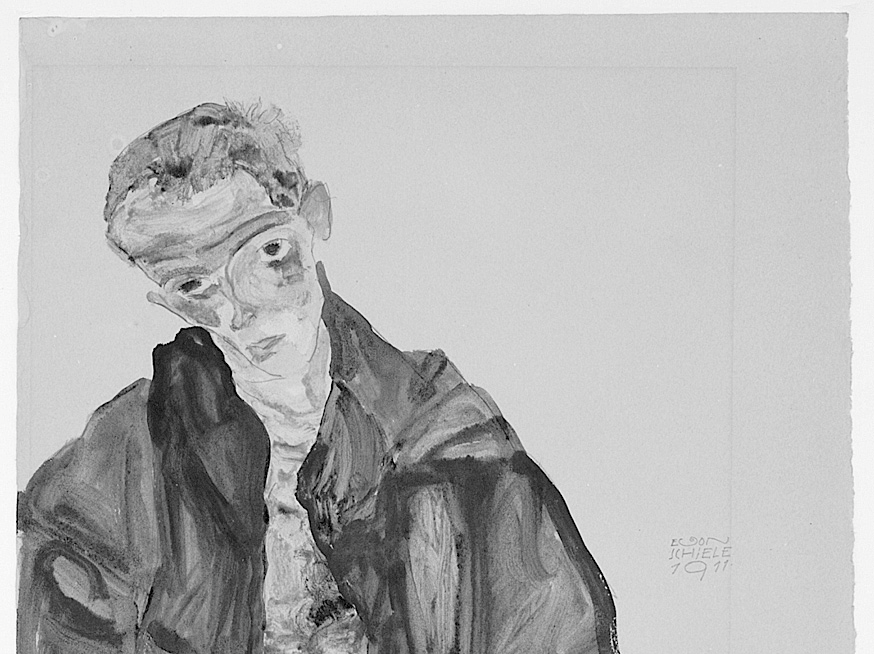
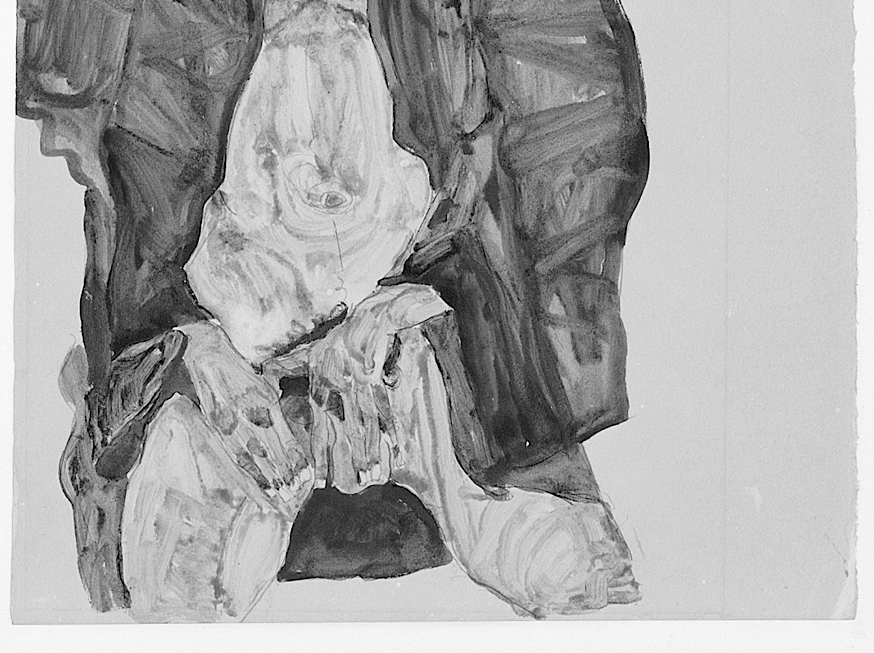
Fig. 1, Self-Portrait in Black Cloak, Masturbating, 1911. Gouache, watercolor and pencil, 48 x 32.1 cm, Vienna, Graphische Sammlung Albertina, inv. 31159. (Graphische Sammlung Albertina.)
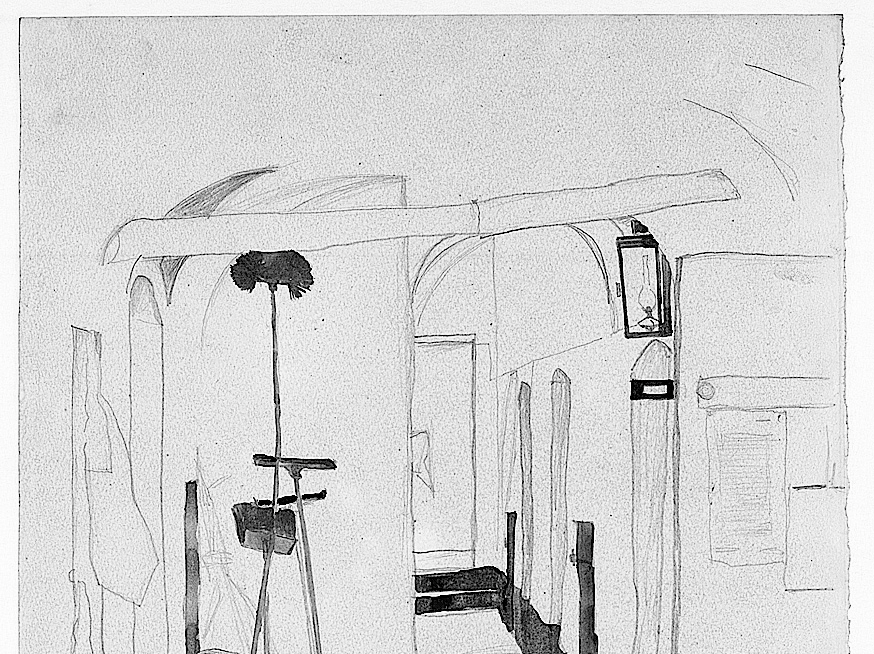
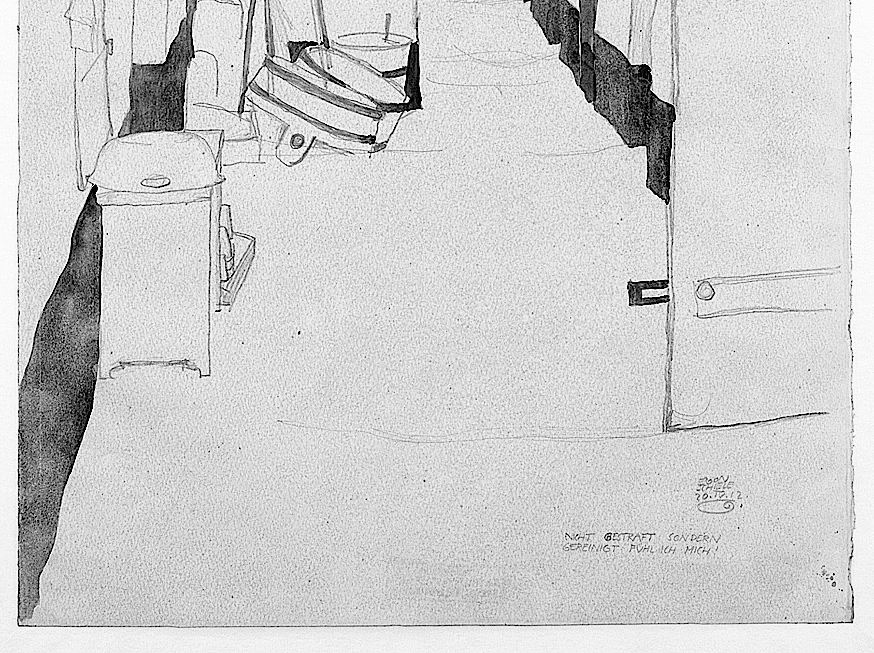
Fig. 2, I Feel Not Punished but Cleansed!, 1912. Gouache, watercolour and pencil, 48.4 x 31.6 cm, Vienna, Graphische Sammlung Albertina, inv. 31025. (Graphische Sammlung Albertina.)
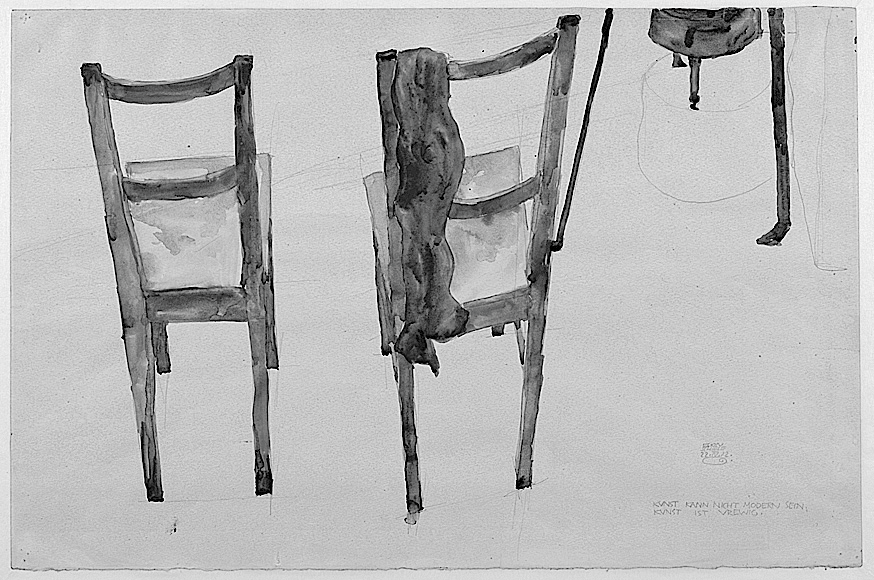
Fig. 3, Art Cannot Be Modern; Art Is Primordially Eternal, 1912. Gouache, watercolour and pencil, 32 x 48.3 cm, Vienna, Graphische Sammlung Albertina, inv. 31031. (Graphische Sammlung Albertina.)
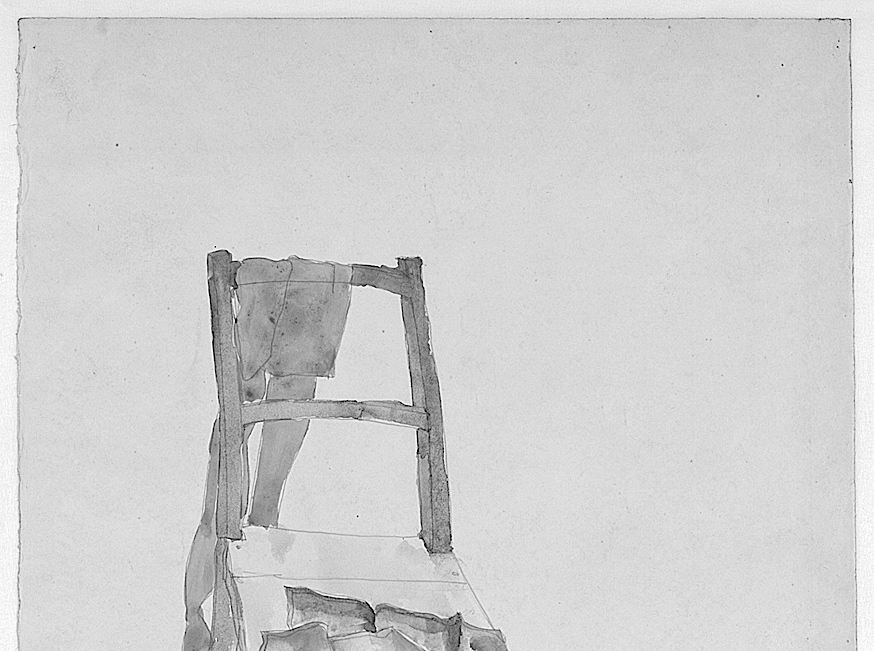
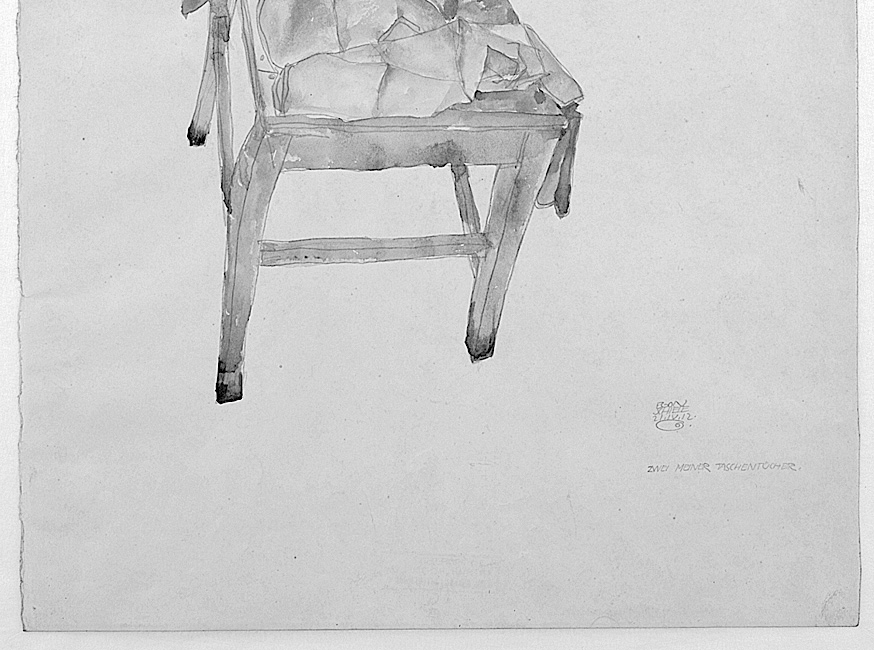
Fig. 4, Two of my Handkerchiefs, 1912. Watercolour and pencil, 48.2 x 31.7 cm, Vienna, Graphische Sammlung Albertina, inv. 31029. (Graphische Sammlung Albertina.)
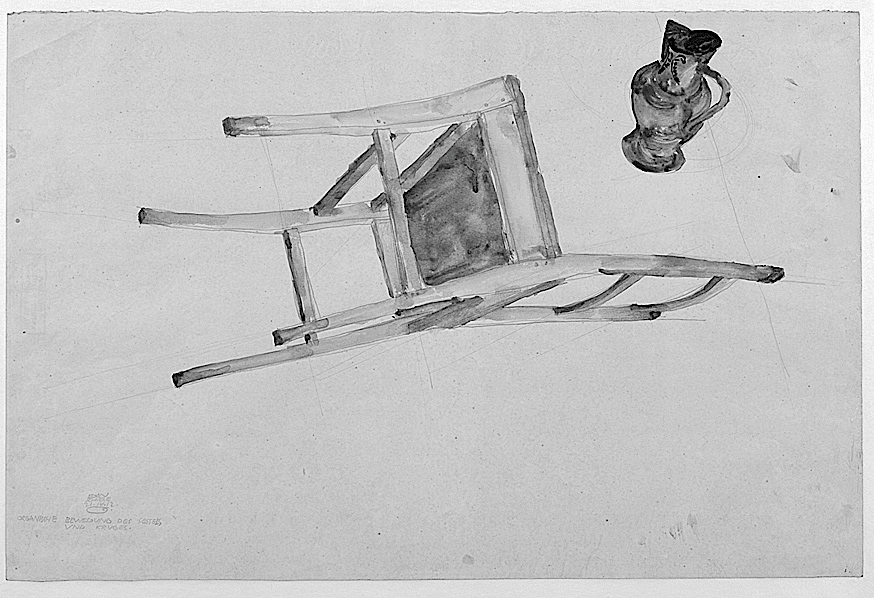
Fig. 5, Organic Movement of Chair and Pitcher, 1912. Watercolour and pencil, 31.8 x 48 cm, Vienna, Graphische Sammlung Albertina, inv. 31030. (Graphische Sammlung Albertina.)
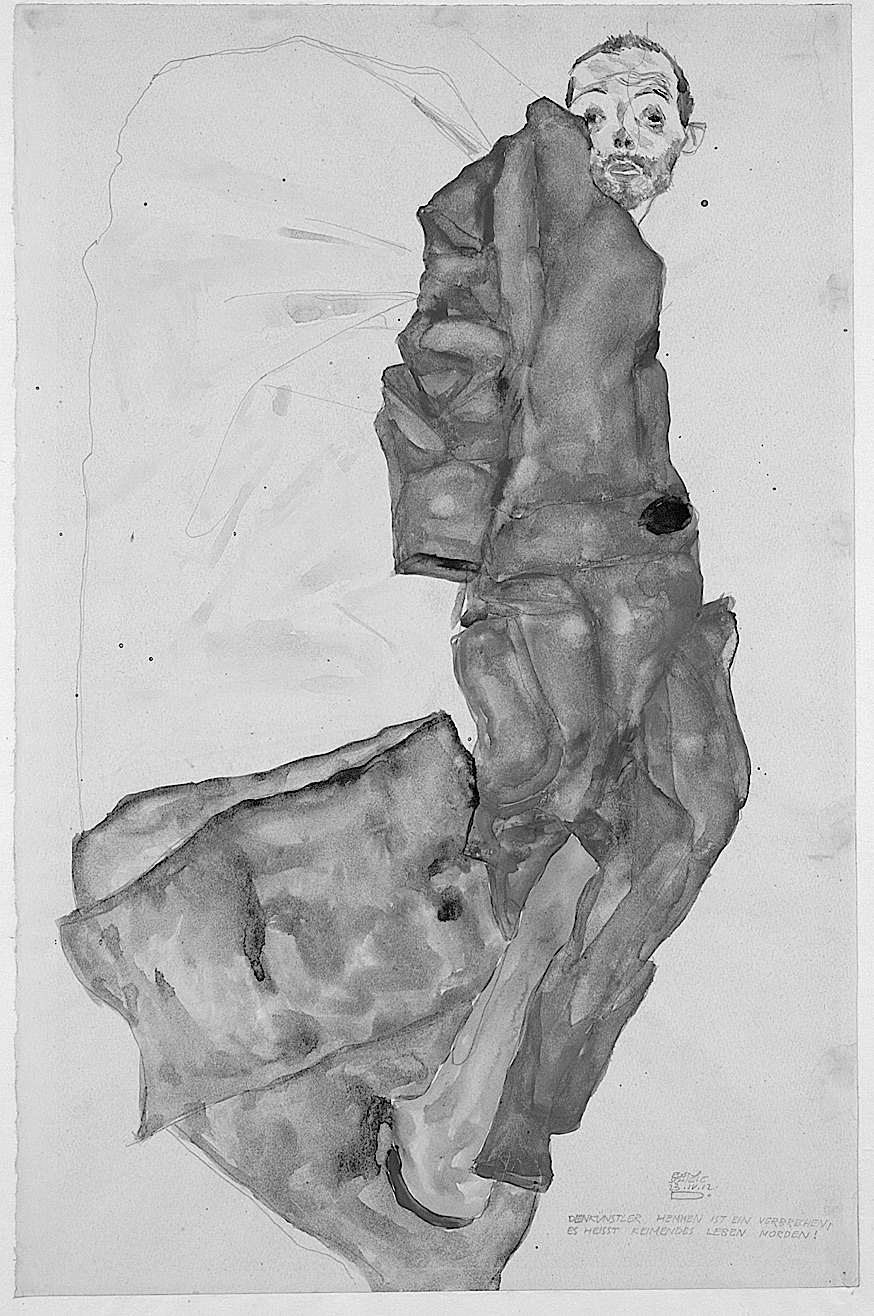
Fig. 6, Hindering the Artist Is a Crime, It Is Murdering Life in the Bud, 1912. Watercolour and pencil, 48.6 x 31.8 cm, Vienna, Graphische Sammlung Albertina, inv. 31162. (Graphische Sammlung Albertina.)
Literature
- Barrett, Cyril 1984 “Ethik und Aesthetics Sind Eins”, in Akten des 8. Internationalen Wittgenstein Symposiums 15 bis 21 August 1983, Viena: Hölder-Pichler-Tempsky, I, 17-22.
- Baudrillard, Jean 1979 De la séduction, París: Galilée.
- Hagberg, Garry 1994 Meaning and Interpretation. Wittgenstein, Henry James and Literary Knowledge, Ithaca: Cornell University Press.
- Janik, Allan 2007 “Das Ästhetische Im Ethischen und das Ethische in Ästhetischen”, in Wilhelm Lütterfelds and Stefan Majetschak (eds.), Ethik und Ästhetik sind Eins. Wittgenstein Studien 15, Vienna: Peter Lang, 11-19.
- Wittgenstein, Ludwig 1980a Tractatus logico-philosophicus, Schriften 1, Frankfurt: Suhrkamp, 7-83.
- Wittgenstein, Ludwig 1980b Philosophische Untersuchungen, Schriften 1, Frankfurt: Suhrkamp, 279-455.
Refbacks
- There are currently no refbacks.